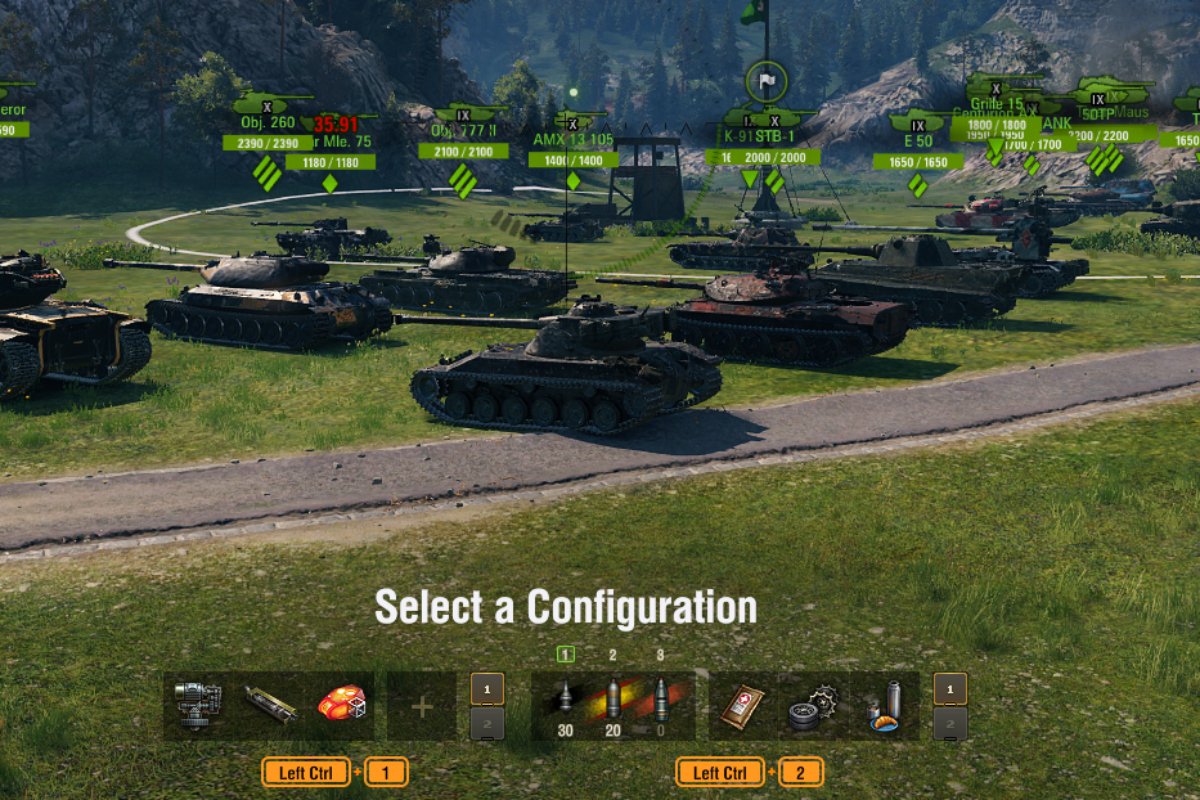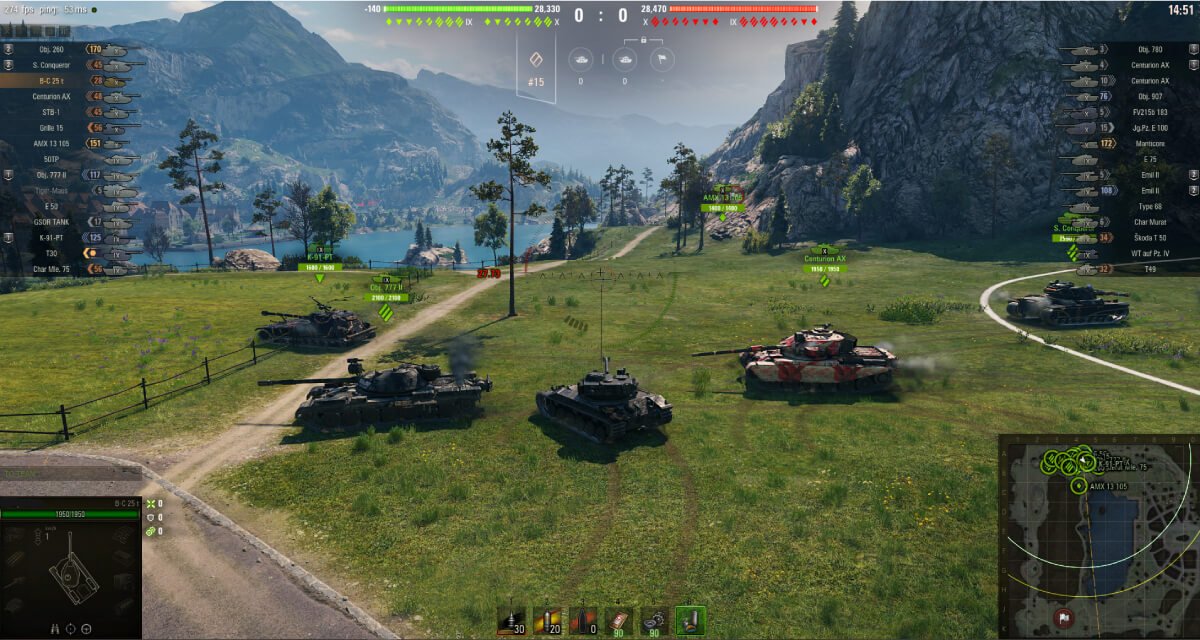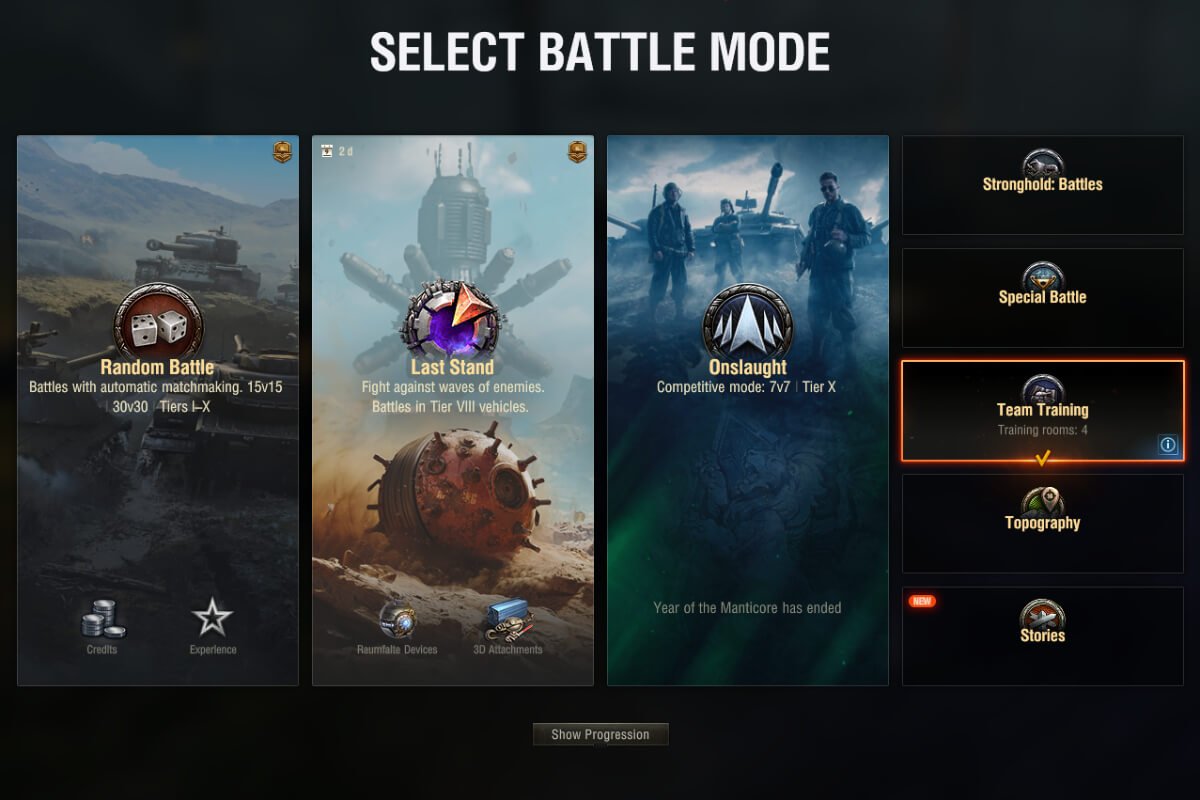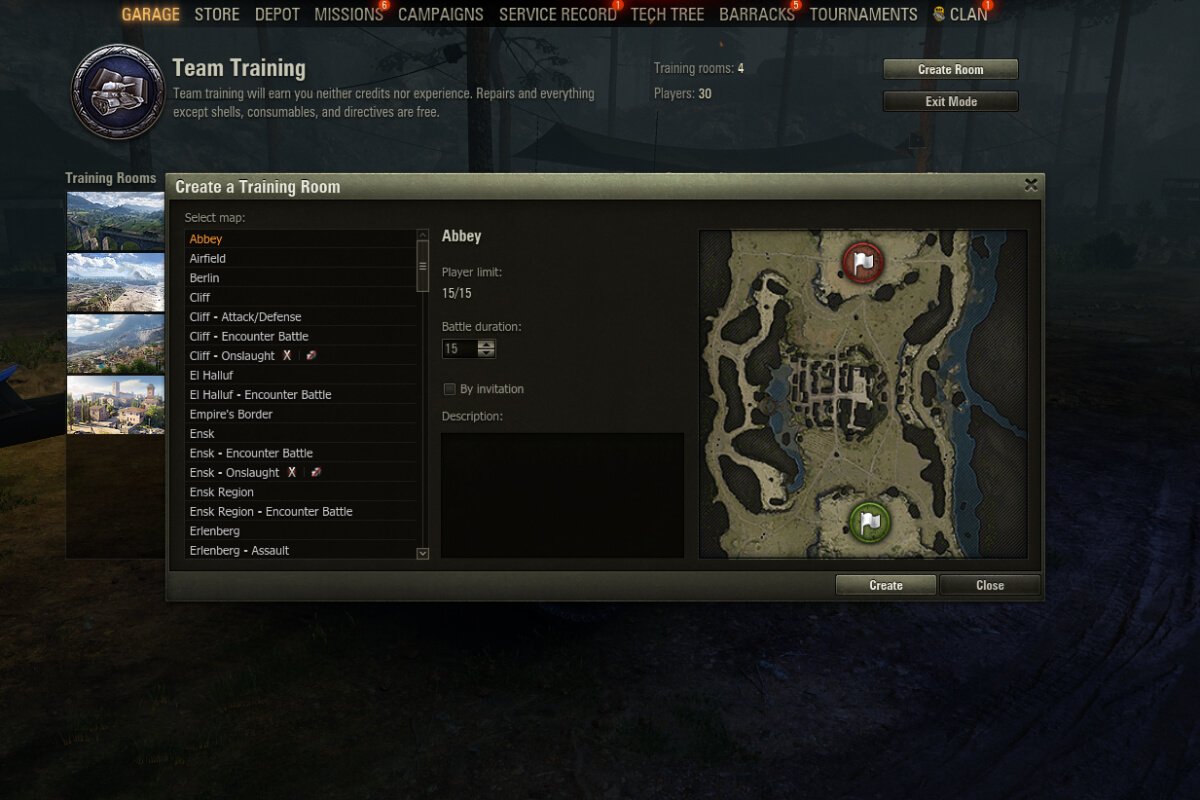Imagine this: you just hit the “Battle” button in World of Tanks, expecting a fair fight. Instead, you’re steamrolled because you didn’t recognize the map’s meta or positioning. This isn’t bad luck—it’s poor map literacy. Each map type—Standard, Encounter, Assault, and Grand—has its own logic, quirks, and traps. If you want to win more consistently, understanding how these maps are structured and how to play them isn’t optional—it’s essential.

TL;DR – Key Takeaways
- Standard maps offer balanced gameplay and form the backbone of competitive matches.
- Encounter maps introduce a neutral objective and favor aggressive positioning and quick decision-making.
- Assault maps are asymmetrical and require defenders to hold and attackers to coordinate.
- Grand maps are massive battlegrounds exclusive to Tier X, built for strategic and large-scale warfare.
- Understanding map rotation, spawn advantages, and terrain types drastically improves your performance.
Understanding Standard Maps: The Backbone of Balanced Warfare

What Makes Standard Maps Special?
Standard maps are the foundation of balanced gameplay in World of Tanks. These maps typically follow a symmetrical or semi-symmetrical layout and feature two base locations, one for each team. The win conditions are simple and direct—eliminate all enemy vehicles or capture their base within the allotted match time. This straightforward objective structure encourages traditional tactical play, which is why Standard maps remain a staple in both casual matches and competitive esports formats. Their design ensures fairness, as no team has an inherent positional advantage from the outset. Maps like Abbey, Prokhorovka, and Cliff are some of the most iconic battlegrounds in this mode. These maps serve as training grounds for mastering spotting mechanics, hull-down positioning, flanking tactics, and raw aiming skills. Because of their predictability and accessibility, new players often learn the game here, while veterans perfect strategies and angles to maximize their performance. Ultimately, Standard maps exemplify what makes World of Tanks engaging—pure tank combat refined through repetition and positioning mastery.
Gameplay Dynamics and Key Features
- Standard maps rely heavily on core mechanics like spotting, angling, positioning, and vision control. Players must know where to peek, how to support from the backline, and when to advance.
- These maps rarely include environmental interactions like movable cover or destructible terrain that significantly alters engagements. Instead, predictability and fairness are the priority.
- Learning the terrain, preferred lanes for various tank classes, and strong firing positions can drastically influence match outcomes. A player who knows when and where to push can often turn the tide of battle.
In competitive tournaments, Standard maps are almost always chosen because they provide a reliable, skill-based playing field. Their clean design strips away distractions, rewarding players who understand terrain elevation, terrain cover, and crossfire logic. Whether you’re in a light tank scouting the ridge on Prokhorovka or in a heavy tank pushing through Abbey, Standard maps teach you how to fight, survive, and win through knowledge and timing.
Encounter Maps: When the Fight Comes to You
Core Concept and Tactics
Encounter maps shift the dynamic by introducing a single neutral base that both teams must fight to control. Unlike Standard mode, where each team has a base to defend or fallback to, Encounter battles concentrate combat around one central location. This often leads to faster, more chaotic matches where early dominance can determine the entire outcome. Key examples of Encounter-compatible maps include Karelia, Cliff, and Ghost Town. Players must quickly assess enemy movements, flank routes, and aggressive pushes toward the shared cap. Light tanks play a pivotal role early on by spotting key approaches, while mediums and heavies contest or defend the circle. One common tactic is using hull-down tanks to contest the cap while faster teammates apply pressure from the flanks. The lack of fallback bases makes every engagement high-stakes and every decision impactful. Reaction speed, team cohesion, and map awareness are the defining attributes of success in Encounter mode.
High Stakes, Fast Decisions
- Because the base is neutral and centrally located, both teams are forced into confrontation, often within the first two minutes of the match. Waiting too long results in the enemy getting cap pressure or positional advantage.
- Capture time in Encounter mode is longer than Standard battles—typically around 300 seconds for a single tank, halved with multiple vehicles in the circle. This longer window forces players to commit to cap pressure while risking reset shots from enemy fire.
- Positioning around the cap zone is everything. While capturing is one way to win, denying the cap or trading smartly near the circle becomes the core of match flow. Heavy tanks and tank destroyers that can lock down firing lanes become especially valuable.
The unpredictability of Encounter mode keeps even experienced players on their toes. Poor team synchronization often leads to either premature rushes or excessive camping. The best results come from flexible team movement—players who can rotate to protect the cap, support flankers, and cut off reinforcements. When played well, Encounter battles provide a fast-paced test of skill and coordination. When played poorly, they often descend into confusion and last-minute collapses. Winning here means seizing momentum early and exploiting mistakes mercilessly.
Assault Maps: Asymmetry Done Right (Or Wrong)
Design Philosophy and Balance Challenges
Assault maps stand out from other battle types due to their asymmetrical design. One team is assigned as the attacker, while the other team defends a single base. The goal for the attackers is simple—capture the base within a 10-minute time limit or destroy the defenders. The defending team, meanwhile, must either eliminate all attackers or delay them long enough to secure victory. Notable Assault maps include Malinovka, Redshire, and Erlenberg. What makes these maps especially challenging is the imbalance of power: defenders often spawn closer to strong positions, while attackers must expose themselves to coordinated fire when pushing forward. A good attacking team must operate in sync, with scouts lighting defensive holds and mediums or heavies pushing under cover. Conversely, defenders must hold flanks, rotate when needed, and not overextend. A passive defense can succeed—but only when backed by good communication and controlled aggression.
Team Roles and Meta Plays
- Attackers are at a natural disadvantage in positioning. They must force the tempo of the match and be willing to sacrifice tanks to draw out defenders. Teams often split pushes or fake flanks to confuse and disorient entrenched enemies.
- Defenders have an easier time setting up crossfire zones and pre-aimed choke points. The key is not to become static. Overcommitting to one area can open gaps for fast tanks to exploit. Mobility and map control remain critical even on defense.
- Light tanks and mobile mediums are pivotal for both sides. For attackers, they enable flank penetration. For defenders, they provide early warning of pushes and can relocate to plug holes in the line.
In practice, Assault mode teaches players how to manage time pressure and information flow. Knowing when to push, when to bait, and when to reposition is everything. These matches can end quickly with a decisive break—or stretch to the final seconds in a tense, defensive standoff. The mode tests your patience, awareness, and ability to work with your team under pressure. Assault maps bring out the best (or worst) in tactical coordination.
Grand Maps: The Ultimate Tier X Showdown
Scale and Complexity
Grand Battles are reserved for Tier X gameplay and involve 30v30 matches on oversized maps with multiple fronts. Unlike the tight, focused layouts of Standard or Encounter maps, Grand Battle arenas are sprawling landscapes like Klondike, Nebelburg, and Hinterland. These maps simulate true large-scale warfare. They feature dozens of firing lanes, high and low terrain elevation, and isolated sectors that may never interact. Teams need scouts, field commanders, and flexible tank compositions to handle varied engagements. Early map control is critical, as losing an entire flank can snowball into a full collapse. These battles offer the highest strategic ceiling in the game and attract experienced players who thrive on multi-layered combat. However, they can be overwhelming to newcomers due to the sheer amount of information to process.
How to Thrive in Grand Battles
- The minimap becomes your best friend. With 29 allies and 30 enemies, understanding who is where and what lanes are collapsing is half the battle. Map pings, voice comms, and minimap awareness dictate outcomes more than mechanical aim.
- Coordination is non-negotiable. Pushing alone or in small unsupported groups leads to instant deletion by clustered enemy fire. Successful teams move in groups of 5-10, supporting each other across lanes while maintaining flank awareness.
- Scouts and artillery gain amplified value. With long sightlines and open areas, a single light tank can farm vision damage or spot rotations. Artillery punishes grouped targets and area denial becomes a valid tactic.
Despite their infrequent rotation, Grand Battles deliver a refreshing experience. They’re more demanding, but also more rewarding. The strategy involved, the scale of the fights, and the importance of teamwork make them feel like a World War II battlefield simulator. For players tired of corridor-style city maps, Grand Battles offer tactical breathing room and chaos on an epic scale. Win or lose, it’s always memorable.
Insider Tips and Personal Insights
Secret Spots and Tricks
Beyond map overviews and general tactics, veterans know that winning often comes down to micro-decisions based on terrain and timing. On Prokhorovka, one of the most iconic light tank plays involves parking in the center bush—just behind the railway lines. With the right camo crew, optics, and team coordination, a single light tank can shut down enemy rotations across the entire midline. However, success hinges on having backup TDs and heavies ready to punish spotted targets. On Cliff, aggressive players can take advantage of the southern hill’s edge by using the drop-off ledge as cover while spotting. This gives surprise angles on enemy mediums while avoiding artillery fire. Then there’s Malinovka—a map often dismissed as slow. But a skilled player using the windmill bush, paired with CVS and a camo directive, can completely lock down the northern field. These spots require practice and team synergy but reward players with map dominance and damage potential.
What the Stats Don’t Show
Statistically balanced maps still have micro-advantages tied to spawn locations and terrain design. For instance, Redshire’s southern team consistently reaches the upper ridge faster, gaining early map control and vision. On Lakeville, northern teams often dominate the middle road thanks to hard cover provided by buildings that allow them to control both the valley and city approaches. These subtle advantages rarely show up on win-rate charts but impact every match. Players who internalize these spawn-based strengths and rotate accordingly win more consistently. Other unspoken truths include artillery blind spots, destructible cover tricks, and line-of-sight hacks that only reveal themselves with experience. These nuances are the difference between an average tanker and one who shapes the battlefield. To fully leverage these hidden dynamics, always track which side you’re spawning on, observe enemy deployment, and adjust your opening moves to counter predicted rushes or scouting lanes.
Map Rotation and Player Experience
Keeping It Fresh (or Not)
Despite having over 50 maps in the Random Battles pool, many players often feel like they’re seeing the same few maps repeatedly. This is due to Wargaming’s weighted map rotation system, which limits repeat exposure but prioritizes certain maps for balancing, testing, or thematic relevance. For example, maps that have recently undergone reworks—like Province or Kharkov—are more likely to appear for evaluation purposes. On the flip side, older or imbalanced maps may be temporarily removed or reduced in frequency. The rotation attempts to balance familiarity with diversity, but repetition still frustrates some long-time players. While map variety is crucial for maintaining interest, too much randomness can disrupt player learning and weaken tactical development. A blend of curated rotation, special events, and reintroductions of legacy maps keeps the game dynamic while giving room for feedback-based refinements.
Customizing the Experience
Wargaming allows players some agency in curating their experience through mode filtering in the game settings. Players can opt out of Encounter, Assault, or Grand Battles depending on their preferences. For example, competitive players looking for consistency may disable Grand Battles due to their chaotic nature, while new players might disable Assault to avoid steep tactical demands. However, narrowing down available modes will shrink your total map pool, resulting in higher frequency of the remaining maps. This can lead to better mastery but also quicker fatigue. The key is balance—if you’re grinding a specific mission or tank line, adjusting mode preferences to favor optimal terrain (e.g., flat maps for snipers, urban maps for heavies) can accelerate progress. But long-term enjoyment usually comes from keeping all options open and embracing the chaos and variety that World of Tanks thrives on.
Explore All Maps in Team Training Mode
How to Access Every Map for Practice

If you’re looking to sharpen your tactics or simply explore every inch of World of Tanks’ diverse battlegrounds, Team Training Mode is your best friend. Accessible from the main menu under the “Select Battle Mode” screen, this option allows players to create custom training rooms. Here’s how to do it:
- Navigate to Team Training from the battle mode selection screen.
- Select Create Room to host your own session.
- On the left side, you’ll see a list of all maps currently available in the game—including variations by mode such as Standard, Assault, and Encounter.
- Choose any map and game mode combination you wish. You can even control the player limit, battle duration, and visibility (invite-only or open).

Training Mode allows you to load into any map with at least one other player. Note: you cannot enter a map solo—you need at least one other participant to start the session. This setup is incredibly useful for exploring sniper nests, testing light tank scouting routes, or practicing side-scraping angles without the chaos of a full match. Want to figure out where that bush on El Halluf actually spots from? Or plan out a flank route in Empire’s Border? Team Training lets you do all that at your own pace. Since there are no rewards or penalties, it’s the perfect environment for experimentation and learning.
Standard Battle Maps (Total: 40)
Standard Battles are the default mode in World of Tanks. These maps are balanced, symmetrical, and available for most vehicle tiers. They support base capture or full team elimination.
- Abbey
- Airfield
- Berlin
- Cliff
- Empire’s Border
- Ensk
- Fisherman’s Bay
- Fjords
- Ghost Town
- Glacier
- Highway
- Himmelsdorf
- Karelia
- Lakeville
- Live Oaks
- Malinovka
- Mannerheim Line
- Mines
- Mountain Pass
- Murovanka
- Outpost
- Overlord
- Oyster Bay
- Paris
- Province
- Pilsen
- Prokhorovka
- Redshire
- Ruinberg
- Safe Haven
- Sand River
- Serene Coast
- Siegfried Line
- Steppes
- Studzianki
- Tundra
- Westfield
- Widepark
- Erlenberg
Encounter Battle Maps (Total: 21)
Encounter Battles feature a single neutral base in the center of the map. Both teams rush to capture it or eliminate the enemy.
- Abbey
- Airfield
- Berlin
- Cliff
- Fisherman’s Bay
- Fjords
- Ghost Town
- Himmelsdorf
- Karelia
- Lakeville
- Live Oaks
- Malinovka
- Mines
- Mountain Pass
- Murovanka
- Pilsen
- Province
- Redshire
- Ruinberg
- Serene Coast
- Westfield
Assault Battle Maps (Total: 10)
In Assault mode, one team defends while the other attacks a single base. The attacking team must succeed within a limited time.
- Erlenberg
- Karelia
- Malinovka
- Prokhorovka
- Sand River
- Steppes
- Siegfried Line
- Redshire
- Murovanka
- Westfield
Grand Battle Maps (Total: 3)
Grand Battles are large-scale 30v30 matches available only to Tier X vehicles. These maps are significantly larger and involve multiple flanks and objectives.
- Nebelburg
- Klondike
- Hinterland
Total Unique Maps Across All Random Battle Modes: 56
Note: Some maps appear across multiple battle types, but the total number of unique playable maps in Random Battles (not counting removed or event-specific maps) is currently 56.
Removed Maps in World of Tanks
- Dragon Ridge – Removed due to poor gameplay flow and visibility issues in the mountainous terrain.
- Hidden Village – Suffered from poor performance and limited tactical options. Removed and never returned.
- Komarin – Notoriously campy; frequently criticized for long stalemates. Removed after multiple reworks failed.
- Port – Removed for technical and design limitations; flat and small, with poor balance.
- Severogorsk – Criticized for linear design and spawn imbalance. Removed from all modes.
- Stalingrad – Too complex and poorly optimized; caused FPS drops on many systems.
- Northwest – Unbalanced and too open. Removed in a patch targeting underperforming maps.
- South Coast – Tactical flow issues and poor terrain design led to its removal.
- Swamp – Removed for being too passive and stalemate-prone. Terrain was considered punishing to slower vehicles.
- Windstorm – Small map with corridor gameplay; removed due to lack of strategic flexibility.
- Minsk – Urban map removed due to gameplay issues and thematic inconsistencies with map performance.
- Winter Himmelsdorf – Duplicate of Himmelsdorf with snowy visuals; removed to reduce map redundancy.
- Ruinberg on Fire – Variant of Ruinberg with fire and destruction visuals; removed due to redundancy and confusion with the original.
- Icebound – Arctic-themed map removed after brief testing; never returned.
- Fiery Salient – A night variant of Prokhorovka; removed due to being a visual duplicate with no gameplay difference.
- Sacred Valley – Unbalanced flanks and poor player reception; removed and never reintroduced.
- Kharkov (Old Version) – Reworked multiple times; removed due to linear gameplay and visibility concerns.
- Mittengard – Very small map for low tiers; removed due to chaotic gameplay and poor balance.
Conclusion
Understanding the differences between Standard, Encounter, Assault, and Grand Battle maps in World of Tanks isn’t just useful—it’s essential to elevating your game. Each mode comes with its own rules, strategic depth, and ideal tank roles. Standard maps reward methodical positioning and classic mechanics, while Encounter maps pressure you to make fast, calculated moves toward a central objective. Assault battles force coordinated pushes and adaptive defense strategies, and Grand Battles deliver chaotic, large-scale warfare where every flank and decision matters.
By learning the unique flow, terrain advantages, and spawn nuances of each map and mode, you’ll gain an edge over less informed players. Whether you’re grinding lines, hunting for mastery badges, or climbing the competitive ladder, map knowledge will always be one of your most powerful tools. So next time you load into Prokhorovka, Cliff, or Nebelburg—know the layout, anticipate the meta, and shape the outcome. Victory isn’t just about firepower; it’s about knowing the ground beneath your treads.


